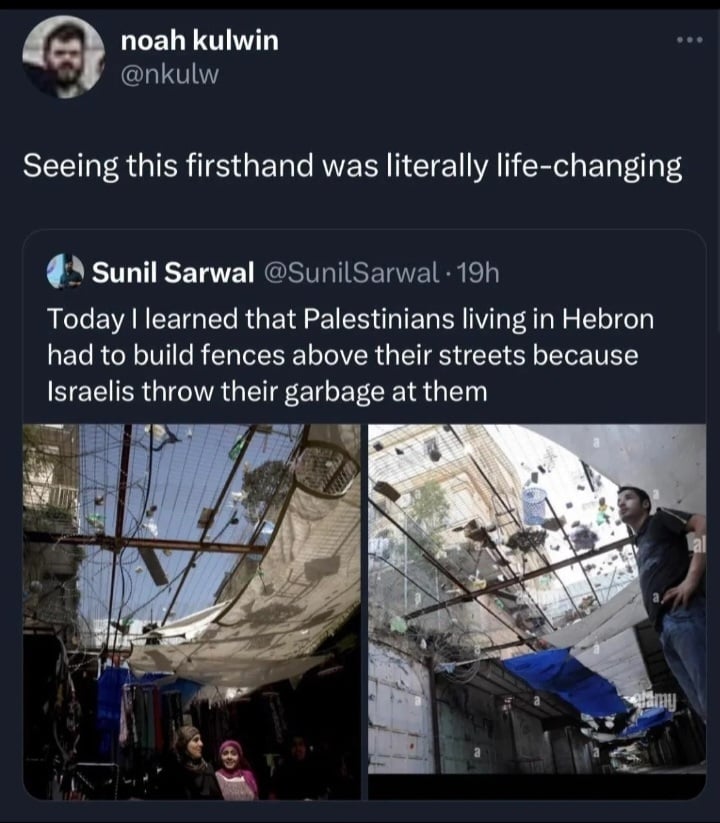Israel has a right to defend itself.
A Boring Dystopia
Pictures, Videos, Articles showing just how boring it is to live in a dystopic society, or with signs of a dystopic society.
Rules (Subject to Change)
--Be a Decent Human Being
--Posting news articles: include the source name and exact title from article in your post title
--Posts must have something to do with the topic
--Zero tolerance for Racism/Sexism/Ableism/etc.
--No NSFW content
--Abide by the rules of lemmy.world
Anyone has a right to defend themselves. Yet there is a very fine line between self defense and aggression.
If you punch the lights out to some idiot that is threatning you, you're defending yourself.
If the other guy drops to the ground and you kick their teeth out and then go find their family to do the same to them, that is aggression.
You mean like the Palestinian violent attacks against Israeli settlers in Hebron? Or are those attacks justified?
Folks please, please go and google "Jewish population of hebron". You are being fed lies and you're eating it all up because you really want to cheer for the underdog.
I found the original source of the photo: It is an article by "The New Yorker" from 2019 that confirms and explains the situation.
https://www.newyorker.com/news/dispatch/a-guided-tour-of-hebron-from-two-sides-of-the-occupation
[...] Hebron, in an area where about thirty thousand Palestinians—a fraction of the number who used to live here—live under direct Israeli military rule, which protects fewer than a thousand Israeli settlers. This part of the city is freely accessible to Israeli citizens and foreigners, but most Palestinians can enter only if they’re residents.
[...]
For a second it felt like we were in a covered market, but this was because the street is fenced in from the top, with a sort of wire net intended to protect the Palestinian traders and their customers from rocks, bottles, and trash thrown by Israeli settlers who live on the street just above. Amro pointed at metal sheeting placed over a section of the net; it is meant to guard against acid that settlers pour down, to destroy the goods sold here.
[...]
In 1997, as part of the Oslo peace process, Israel and the Palestinian Authority drew a line splitting Hebron in two. The area designated as H-1 is controlled by the Palestinian Authority; in H-2, the Palestinian Authority has civil administration over Palestinian residents and the Israeli military controls everything else. H-1 is far larger, and in the past two years its population has roughly doubled, while H-2’s has dwindled because settler violence and I.D.F. restrictions have made life unbearable for Palestinians. But H-2 contains the city’s historic center, its most popular square, and its wholesale, vegetable, spice, and other markets—all of them now hollowed out. The market street through which Amro leads his tour hits a dead end at the border between H-1 and H-2. Here, though, the border is also vertical: the market street is in H-1; the street directly above is in H-2. This is why the protective net and metal sheeting are necessary.
